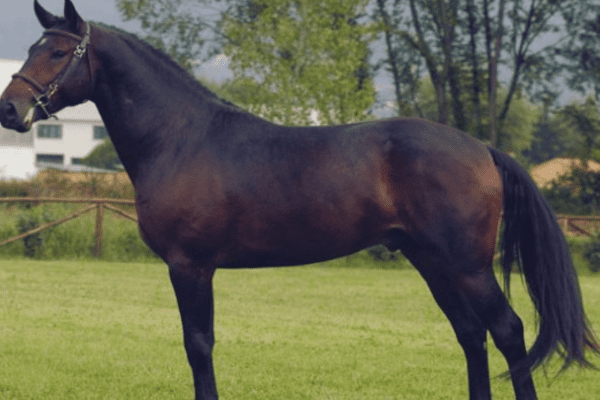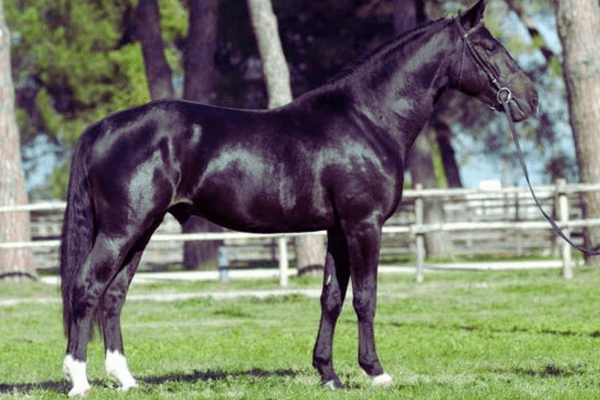The Tolfetano, or Cavallo Tolfetano, stands as an emblematic horse breed originating from Italy’s Lazio region, particularly the Monti della Tolfa area within the Maremma Laziale. This breed, named after the hills that cradle its origins, is renowned for its hardiness and economical nature, traits forged by the demanding and resource-scarce environment of its homeland.
Recognized for its distinctive characteristics and limited distribution, the Tolfetano is one of the fifteen indigenous horse breeds honored by the AIA (Associazione Italiana Allevatori), the esteemed Italian breeders’ association. This recognition not only celebrates the Tolfetano’s unique qualities but also highlights its valuable role in the tapestry of Italy’s equine heritage.
History:
The Tolfetano horse, with its rich heritage and impressive lineage, can be traced to central Italy’s Meramma Laziale region and Monti della Tolfa region of Monti della Tolfa. Once part of ancient Etruscan civilization between Rome and Viterbo, Tolfetanos horses have always been part of this area’s cultural and historical landscape – just ask any Etruscan!
Development of the Tolfetano horses has long been shrouded in controversy and debate, and several theories exist regarding their creation. One such theory holds that Tolfetanos originated through crossbreeding between local equines and imported Spanish and Barb breeds imported into Italy; it is thought this mixing has provided them with their unique traits.
Some historians suggest that Tolfetanos may represent an earlier form of Maremmano breed before its genetic change with Thoroughbred genetics was introduced. This gives an interesting glimpse into their deep-seated lineage and any possible links with earlier forms.
An intriguing theory suggests that Tolfetanos have Mongolian roots. According to this theory, the breed could have come into Italy during Lombard and Bulgarian invasions and linked it back into Mongolia’s extensive horse ancestry.
History shows the Tolfetano horse has played an increasingly prominent role within Italian society over time. Before the widespread adoption of agricultural machinery in the 1940s, these horses played an essential role in various agricultural roles including cattle herding – reflecting their adaptability and value in rural Italian communities.
History of Tolfetano Horses paints an elegant portrait of an adaptable breed deeply embedded within Italian culture and history, becoming a living part of its history and fabric. Such an expansive past makes this horse all the more emblematic of Italy’s rich equine legacy.

Characteristics of the Tolfetano Horse:
The Tolfetano horse breed, with a long and storied history in Italy, stands out for its remarkable characteristics. These horses often boast robust and compact builds ideal for traversing rugged terrain like that found in Monti della Tolfa region of their home country; usually standing 15 to 16 hands in height they feature well-proportioned muscularity in their physiques.
The coat, typically bay or chestnut in hue, lends the breed an eye-catching appearance. Their mane and tail are usually thick and luxurious – complementing their sturdy frame perfectly.
Notable features of their heads include expressive eyes with straight or slightly convex profiles exuding alertness and intelligence.
Temperamentally, Tolfetanos are well known for their calm yet playful temperament. Bred to survive harsh environments of their homelands, Tolfetanos exhibit remarkable balance between strength and agility as well as reliable behavior that make them perfect for riders from beginner to expert levels and various equestrian activities.

Uses of Tolfetano Horse:
Historical accounts point to the Tolfetano horse as being an extremely versatile breed, serving multiple roles within Italian society. Primarily utilized in agricultural settings for cattle herding and farm work tasks – attesting to its strength and endurance.
Modern times have seen Tolfetano horses find an increasingly prominent niche across various equestrian disciplines. Thanks to their robust builds and endurance, these horses excel at trekking and endurance riding activities; additionally their calm temperament makes them suitable choices for therapeutic riding programs, offering benefits to riders of all ages and abilities.
Tolfetanos are known for their agility and responsiveness, making them suitable for more traditional equestrian sports such as dressage and show jumping. Furthermore, their intelligence and willingness to learn have earned them high regard among natural horsemanship circles, where their cooperative nature is highly prized.
In essence, the Tolfetano horse breed represents both Italy’s rich equine heritage and modern equestrian demands seamlessly. With a combination of physical features and versatile utility that continues to charm horse enthusiasts around the globe.

